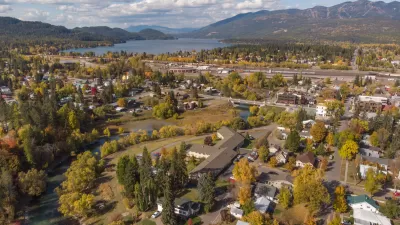The decision invalidates a preliminary injunction that blocked two key housing bills.

The Montana Supreme Court reversed a decision by a judge last year that would have blocked two zoning reform bills, reports Blair Miller in the Daily Montanan. “The court found that Judge Mike Salvagni, a retired judge who was brought in for the case, incorrectly issued the preliminary injunction based on whether there was a ‘possibility’ of harm to the group and that it had only offered ‘generalized fears and supposition’ about the effects of Senate Bills 323 and 528,” Miller adds.
The court ruled that the claim did not meet four key factors required for a preliminary injunction: “that the applicant is likely to succeed on the merits; is likely to suffer irreparable harm absent preliminary relief; that the balance of equity tips in the applicant’s favor, and that the injunction is in the public interest.”
The bills, which call for cities to allow accessory dwelling units (ADUs) and duplexes on residential lots, were part of a major legislative package aimed at reforming outdated zoning laws and addressing the housing shortage that took effect on January 1 of this year. “SB 528 allows municipalities to allow accessory dwelling units on land that already has a single-family home, while SB 323 allows duplexes to be built in cities with populations of at least 5,000 people where single-family homes are allowed.”
FULL STORY: Montana Supreme Court reverses judge’s decision that blocked residential zoning laws

Trump Administration Could Effectively End Housing Voucher Program
Federal officials are eyeing major cuts to the Section 8 program that helps millions of low-income households pay rent.

Planetizen Federal Action Tracker
A weekly monitor of how Trump’s orders and actions are impacting planners and planning in America.

Ken Jennings Launches Transit Web Series
The Jeopardy champ wants you to ride public transit.

Washington Legislature Passes Rent Increase Cap
A bill that caps rent increases at 7 percent plus inflation is headed to the governor’s desk.

From Planning to Action: How LA County Is Rethinking Climate Resilience
Chief Sustainability Officer Rita Kampalath outlines the County’s shift from planning to implementation in its climate resilience efforts, emphasizing cross-departmental coordination, updated recovery strategies, and the need for flexible funding.

New Mexico Aging Department Commits to Helping Seniors Age ‘In Place’ and ‘Autonomously’ in New Draft Plan
As New Mexico’s population of seniors continues to grow, the state’s aging department is proposing expanded initiatives to help seniors maintain their autonomy while also supporting family caregivers.
Urban Design for Planners 1: Software Tools
This six-course series explores essential urban design concepts using open source software and equips planners with the tools they need to participate fully in the urban design process.
Planning for Universal Design
Learn the tools for implementing Universal Design in planning regulations.
Heyer Gruel & Associates PA
Ada County Highway District
Institute for Housing and Urban Development Studies (IHS)
City of Grandview
Harvard GSD Executive Education
Toledo-Lucas County Plan Commissions
Salt Lake City
NYU Wagner Graduate School of Public Service





























